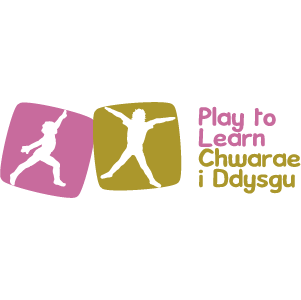
Instructions
Trapping is the term used to bring a moving object under control, so that it can then be further manipulated. Successful trapping will require good timing, good hand–eye or foot–eye co-ordination and control. The ability to trap with feet is particularly important in football. A stick can also be used to trap an object, e.g. in hockey and ice hockey.
- Keep the eyes focused on the ball, tracking its path
- Get directly in line with the path of the ball
- Use the side of the foot to stop the ball
- On contact give/‘cushion’ to absorb the momentum
- Bring the ball under control

Safety
Ensure…
- soft balls are used initially
Opportunity to develop
- Control
- Co-ordination
- Accuracy
- Manipulative skills
- Spatial awareness
Physical Development Area of Learning
- contributes to ‘Personal’ and ‘Adventurous and physical play’ sections
If you see
| Observation | Likely Cause | Solution |
|---|---|---|
| Ball bounces off the child’s foot | Trunk remains rigid and upright. The child does not cushion the path of the ball. | Keep the ball in a specified area |
| Fails to get in line with the path of the ball | Does not track the direction of the ball | Track simple objects such as balloons, bubbles, beach balls |
| Uses their hands to stop the ball | Lacks co-ordination and confidence | Use different body parts |
| Ball bounces off the child’s foot | Approaches the ball too quickly and eagerly | Remain behind a cone and only move once the ball has passed this |
| Ball gets caught up under the child’s foot | Traps the ball with the sole of the foot | After trapping the ball it should be positioned just in front of the body. Place a cone or line down for the child to trap the ball within. |
| Ball goes under the foot | Traps the ball with the sole of the foot | Trap the ball with the side of the foot |
Can you see?
- the child tracking the direction of the ball throughout?
- the child getting their body in line with the path of the ball?
- the child ‘cushioning’ the ball on contact?
- the child keeping the ball under control and close to the body?
- the child trapping balls moving at different speeds?
-
Mostly No
- Sit on the floor with legs astride. Roll a number of balls to the child and ask them to explore ways of stopping the balls.
- Roll a ball sympathetically to the child who then traps the ball with the foot within a specified zone.
- With the child standing up, roll a ball to them. Encourage them to explore ways of stopping the ball with their feet and hands. Explore parts of the body where the ball can be trapped.
-
Yes and No
- Trap the ball while dribbling on command or independently
- Increase the speed of the dribble
- Roll a ball in different directions into a space and move to trap the ball
-
Mostly Yes
- Stop a ball with an implement. How must the implement be held?
- Make the area smaller by increasing the speed with which the ball is rolled
- Move to trap a ball that is rolled away from them
-
Challenge
- Trap a ball standing on a line
- Trap a ball rolled by your partner
- Trap and kick between you and your partner
- Trap and kick two balls alternately and simultaneously between you and your partner; vary the ways you can do this
- Trap a ball using any combination of the above, using a variety of balls, using both feet alternately
- Trap a ball in response to a range of cues; use both feet alternately
- Combine dribbling with feet, trapping, kicking and fast feet in response to a range of cues, using different directions, pathways and speeds


